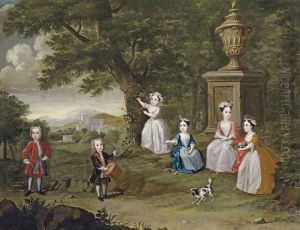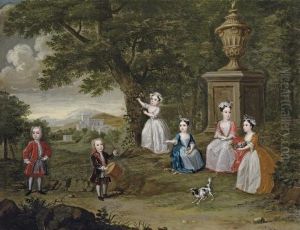Rene Auguste Constantyn Paintings
René Auguste Chantre (sometimes spelled as Constantyn) was a French painter, particularly known for his landscapes and scenes depicting rural life in France. Born on March 13, 1863, in Lyon, France, Chantre developed an affinity for art at a young age. His work is often characterized by a gentle, naturalistic style, reflecting the influence of the Barbizon school, which emphasized painting nature directly from life with a focus on mood and atmosphere.
Chantre studied at the École des Beaux-Arts in Lyon under the tutelage of Jean-Georges Vibert, a genre painter, and Michel Dumas. He later moved to Paris, where he continued his artistic education and began to establish himself within the artistic community. Chantre's paintings often depicted the French countryside, the daily life of peasants, and serene pastoral scenes, which were popular subjects during the late 19th and early 20th centuries.
Throughout his career, Chantre exhibited his work at various salons and exhibitions, gaining recognition and accolades for his contributions to French art. His approach to painting was traditional, and he remained relatively unaffected by the emerging modernist movements that were gaining momentum during his lifetime, such as Impressionism and Post-Impressionism.
René Auguste Chantre's paintings are appreciated for their attention to detail, harmonious color palettes, and the sense of tranquility they evoke. His work is a testament to the enduring appeal of the French landscape tradition and the rural genre scenes in the period before World War I.
Chantre continued to paint and exhibit his work until his death on August 9, 1939, in La Côte-Saint-André, France. Today, his paintings can be found in private collections and occasionally appear in art auctions. While he may not be as widely known as some of his contemporaries, his contributions to the genre of landscape and rural painting remain significant within the context of French art history.

